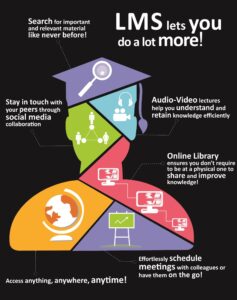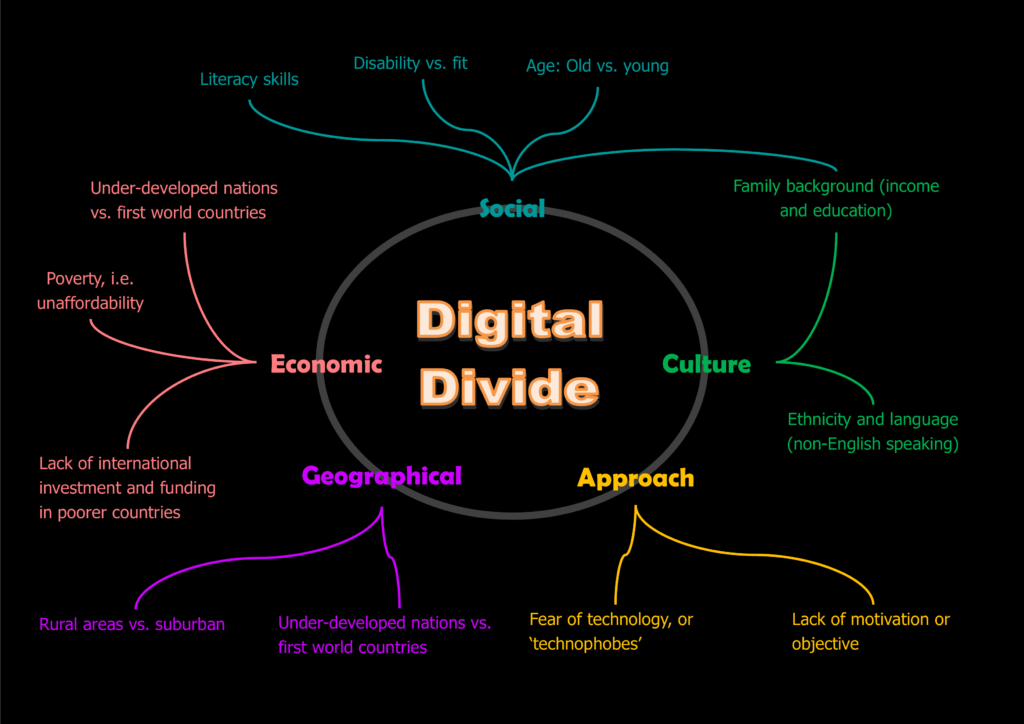In recent years, the landscape of education has undergone a significant transformation, with online and blended learning becoming increasingly prevalent. This shift has been accelerated by various technological advancements and the need for flexible learning options. As educators navigate this digital terrain, the importance of using appropriate tools for online and blended learning cannot be overstated. In this blog post, we will explore some of the most useful and relevant tools for online and blended learning, which we already discussed in our previous presentation and we will also discuss their impact on the teaching and learning experience.
 1. Learning Management Systems (LMS): LMS platforms such as Moodle, Canva, or Google Classroom serve as the backbone of online and blended learning environments. These platforms provide a centralized hub for course materials, assignments, discussions, and assessments. Educators can organize content, track student progress, and facilitate communication seamlessly. With features like discussion forums, chat functionalities, and grade books, LMS platforms promote engagement and collaboration among students and instructors.
1. Learning Management Systems (LMS): LMS platforms such as Moodle, Canva, or Google Classroom serve as the backbone of online and blended learning environments. These platforms provide a centralized hub for course materials, assignments, discussions, and assessments. Educators can organize content, track student progress, and facilitate communication seamlessly. With features like discussion forums, chat functionalities, and grade books, LMS platforms promote engagement and collaboration among students and instructors.
As an educator, incorporating an LMS into my teaching practice has streamlined course management tasks and enhanced communication with students. The ability to deliver content asynchronously accommodates diverse learning styles and schedules, while also fostering a sense of autonomy among learners. Additionally, the analytics and reporting tools offered by LMS platforms enable data-driven decision-making, allowing me to tailor instruction to meet the needs of individual students more effectively.
2. Video Conferencing Tools: Video conferencing tools like Zoom, Microsoft Teams, or Google Meet have become indispensable for synchronous online instruction and virtual meetings. These platforms facilitate real-time interaction and enable educators to conduct live lectures, discussions, and collaborative activities remotely. Features such as screen sharing, breakout rooms, and chat functionalities enrich the virtual learning experience and promote active participation.
Integrating video conferencing tools into my teaching approach has bridged the distance between myself and my students, fostering a sense of community and connection in the online classroom. The ability to engage in face-to-face interactions, even in a virtual environment, enhances communication and enables me to address questions or concerns in real-time. Furthermore, recording lectures or sessions allows students to revisit content at their own pace, reinforcing learning and accommodating diverse learning preferences.
3. Interactive Multimedia Resources: Interactive multimedia resources, including videos, simulations, and interactive tutorials, enrich the online learning experience by catering to different learning modalities and promoting active engagement. Platforms like Khan Academy, TED-Ed, Kahoot! or Quizizz offer a variety of multimedia resources that educators can integrate into their lessons to reinforce concepts, stimulate critical thinking, and spark curiosity.
By incorporating interactive multimedia resources into my online courses, I have been able to create dynamic and engaging learning experiences that transcend the limitations of traditional textbooks. These resources serve as valuable supplements to course content, providing visual and auditory stimuli that appeal to diverse learners. Moreover, interactive elements such as quizzes or games promote interactivity and self-assessment, empowering students to take ownership of their learning journey. I watched a video on you-tube which shows the art of communication required in an online learning environment. Please watch, it will help you a lot in an online learning classroom.
In our classroom presentation I have discussed the challenges and solutions in online education, which are integral aspects that educators, institutions, and learners continually encounter and address. Here’s an exploration of some common challenges faced and discussed during presentation along with potential solutions:
Lack of Access to Technology and Internet:
Challenge: Many learners, particularly in underserved communities, may lack access to reliable technology devices and internet connectivity, hindering their ability to participate in online learning.
Solution: Institutions can provide loaner devices or technology stipends to students in need. Additionally, partnerships with internet service providers or community centers can offer free or discounted internet access to students. Educators can also create offline learning materials for students with limited internet access.
Digital Literacy and Technical Skills:
Challenge: Some learners may struggle with navigating online learning platforms, using digital tools, or troubleshooting technical issues.
Solution: Institutions can offer digital literacy workshops or online tutorials to help students develop essential technical skills. Educators can provide clear instructions and tutorials on using online tools and platforms, along with dedicated technical support for troubleshooting issues.
Maintaining Engagement and Motivation:
Challenge: Online learning environments may lack the social interaction and in-person engagement found in traditional classrooms, leading to decreased motivation and participation among students.
Solution: Educators can incorporate interactive activities, multimedia content, and gamified elements into online courses to enhance engagement. Building a sense of community through virtual discussions, group projects, and peer collaboration can also foster motivation and accountability among learners.
Ensuring Academic Integrity: 
Challenge: Maintaining academic integrity in online assessments and exams can be challenging due to concerns about cheating and plagiarism.
Solution: Implementing secure online assessment platforms with features like plagiarism detection, question randomization, and time limits can help mitigate academic dishonesty. Additionally, designing authentic assessments that require critical thinking, application of knowledge, and reflection can deter cheating.
Time Management and Self-Discipline:
Challenge: Online learners may struggle with managing their time effectively and maintaining self-discipline without the structure of traditional classroom settings.
Solution: Educators can provide clear timelines, deadlines, and expectations for assignments and activities to help students manage their time. Encouraging the use of time management tools, creating study schedules, and promoting self-reflection on learning goals can also support self-discipline and accountability.
Promoting Social Interaction and Collaboration:
Challenge: Online learners may experience feelings of isolation and limited opportunities for social interaction and collaboration with peers.
Solution: Incorporating synchronous sessions, such as live video lectures, virtual office hours, and group discussions, can facilitate real-time interaction and collaboration among students. Utilizing online collaboration tools, such as discussion forums, group projects, and peer review activities, can also foster social engagement and teamwork.
Addressing Equity and Inclusivity:
Challenge: Online learning environments may increase existing disparities in access to education and resources, leading to inequities in learning outcomes.
Solution: Institutions can adopt inclusive design principles to ensure that online courses are accessible to learners with diverse backgrounds, abilities, and learning needs. Providing accommodations, such as captioned videos, screen reader compatibility, and alternative formats for materials, can enhance accessibility for all learners.
By acknowledging these challenges and implementing proactive solutions, educators, institutions, and learners can work together to create more inclusive, engaging, and effective online learning experiences.
In conclusion, the effective integration of tools for online and blended learning is essential for enhancing the teaching and learning experience in today’s digital age. By leveraging learning management systems, video conferencing tools, and interactive multimedia resources, educators can create dynamic and engaging learning environments that foster collaboration, communication, and critical thinking skills. While the transition to online and blended learning may present challenges, embracing these tools empowers educators to adapt their pedagogical approaches and meet the evolving needs of students in the 21st century.
Hey jashan,Your blog talks about using tools to make online classes more interesting and fun for students. It says things like Google Classroom and Zoom are really helpful. These tools help teachers organize lessons, talk to students, and make learning more interactive. The blog also mentions video calls, where teachers can have live classes online. This helps students feel connected and engaged. Using fun things like videos, games, and quizzes also makes learning online more enjoyable. The blog also talks about the challenges of online learning, like not everyone having access to technology. It suggests ways to overcome these challenges. Overall, it’s a helpful guide for teachers to make online classes better!
Great post Jashan!
Your insights into the benefits of Learning Management Systems are spot-on and very helpful for me as an administrator. I resonate with your belief of enhancing student communication through LMS integration. This is crucial!